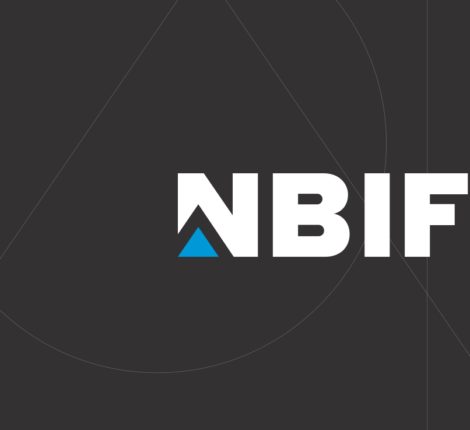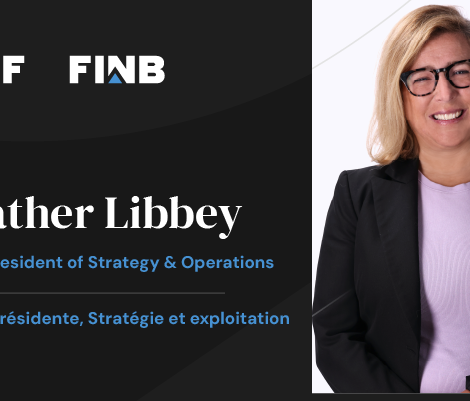- September 14, 2020
- Applied Research , Uncategorized
- Comments : 0
Filling A Key Funding Gap

Dr. Laura Richard, D. Phil (Oxon)
Director of Research
As part of our continuing efforts to improve our research funding offerings, our team at NBIF undertook a review of innovation funding in New Brunswick, from the earliest stage of fundamental research to well established, profitable companies.
We know that fundamental research done in New Brunswick’s universities, colleges and institutions can lead to the development of new companies that focus on commercializing an innovative new process, product or way of solving a problem. What we discovered is a striking funding gap at the point when a newly developed technology or process was ready to be commercialized. This gap appears at the time when the researcher begins to step outside of traditional research activities, for example when creating a business plan, building a start-up team, and officially founding a new company. This gap, which is seen in many other jurisdictions, is often called the “Valley of Death” in the start-up community. Why? Because many great ideas have faltered here before they built enough momentum to be commercially viable.
So why does the gap exist?
Fundamental research explores how things work – it’s the vital first step to solving a more significant problem that can be commercialized and sold as a product or service. Much fundamental research relies on public research funding from organizations like NSERC, SSHRC, and CIHR. These “Big Three” funding sources have led to vital research being done across Canada, including here in New Brunswick.
One of the significant challenges associated with these organizations’ funding is that all the research results must be made public. That makes sense for the investment of taxpayer dollars, but it creates some obvious problems for researchers – that new discovery central to your start-up business idea might be less valuable if everyone knows about it. Some research needs to be done out of the spotlight, and many early-stage entrepreneurs jealously guard their intellectual property – and with good reason.
So that means researchers are often left looking for other sources of funding. Angel investors exist, of course, but are constrained by the size and number of their investments. Funding a new business venture, yourself is an option, but the lengthy timelines and specialized equipment that some science-heavy ventures require are restrictive. That’s part of why researchers choose to sell or license their technology to an established company instead of starting up their own. Organizations like Springboard Atlantic do a great job connecting Atlantic Canadian entrepreneurs looking for research with specialized researchers in the region’s universities and colleges and providing programming that supports the commercialization of post-secondary research.
For those researchers who want to embrace the risk of starting a company themselves and shepherd their idea into commercial reality, the journey is long and difficult. Researchers may need to develop a Minimum Viable Product (MVP) to test the product’s reaction in the marketplace. That means bringing in some core members of the team to help with product development and preliminary sales and marketing efforts – which costs money. They may often want to bring in a seasoned entrepreneur to refocus their academic research efforts into a commercial space, which costs yet more money. Unfortunately, most research funding is limited to pre-commercial efforts before these stages, and most venture capital follows initial market traction. That means there are few resources to help with these first, tentative steps.
This funding gap exists well beyond New Brunswick. It’s an issue across North America and around the world. NBIF is one of the very few Canadian organizations that provide both research funding and venture capital, uniquely positioning us to fill the gap. We have always worked to help our researchers navigate this gap and launch their start-ups.
Our portfolios boast numerous success stories, such as Envenio, Canum Nanomaterials and Smart Skin Technologies. But we want to help even more academics in this space. That’s why we are developing a new fund aimed at helping New Brunswick researchers and early-stage entrepreneurs escape the Valley of Death and use their proprietary research to build profitable companies. Stay tuned for more updates!
We know that dozens of researchers in New Brunswick could benefit from financial support to help them take their researcher out of the lab and into commercial reality – professors, graduate students, and post-doctorate researchers have insights and innovations that can be commercialized and monetized. New Brunswick is missing out if we let these opportunities pass us by.
Whether with the financial freedom that comes from funding, a friendly chat with our experienced staff about the options ahead, or help in finding a business partner, NBIF is here to help New Brunswick researchers. Talk to us today about making the most of your discoveries – whether that be by developing successful new start-ups, licensing agreements or other collaborations with established businesses, or perhaps an entirely different route.
At NBIF, we believe firmly in the ingenuity of our research community – we want to help them achieve even greater things.


